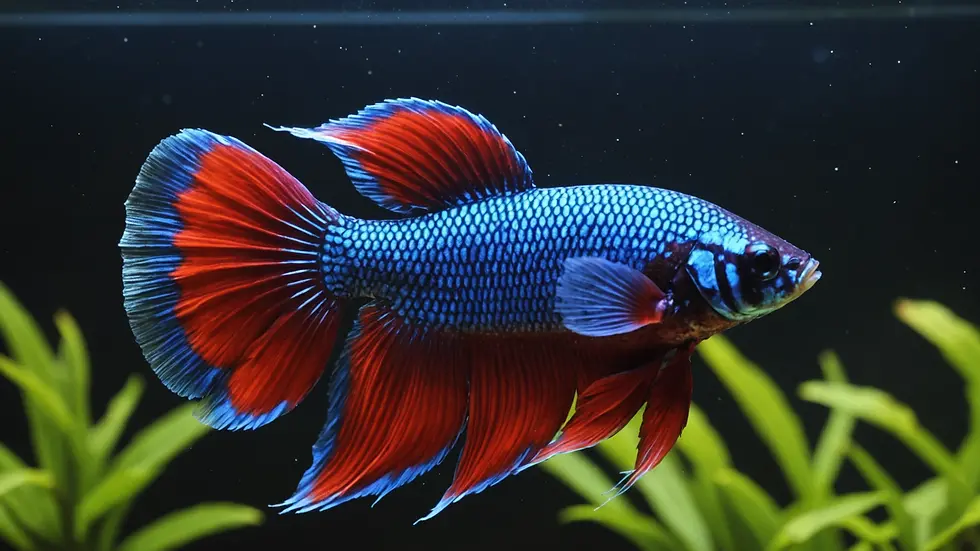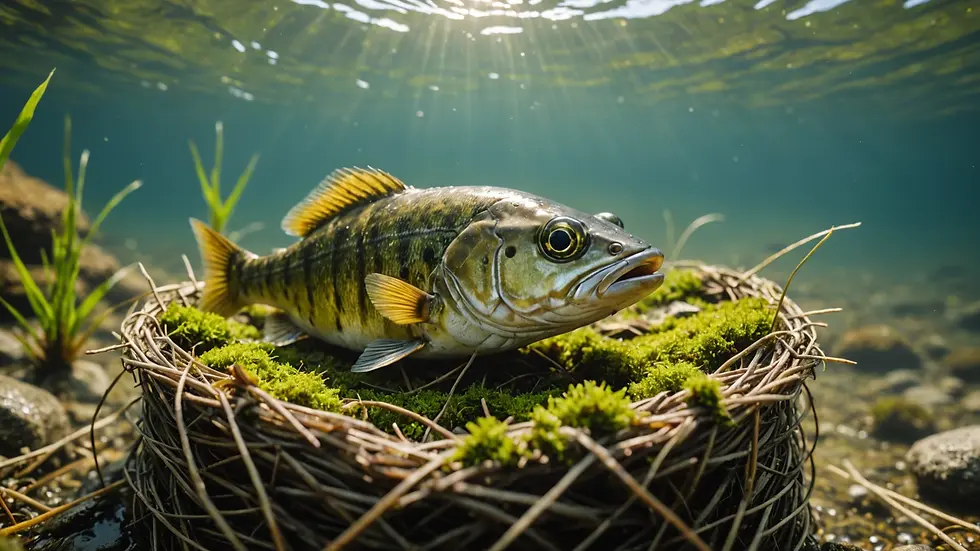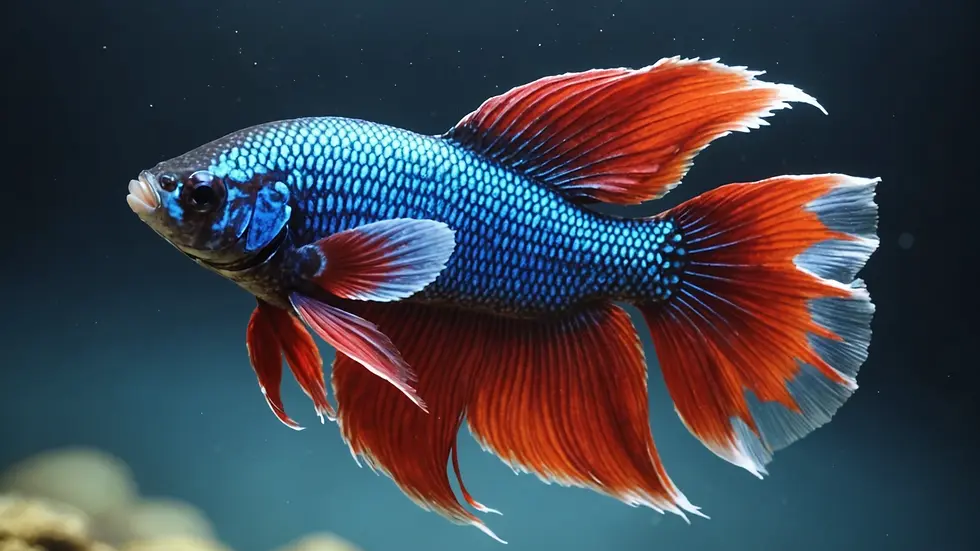What Really Happens During Fish Mating Rituals?
- Jyotiraj Borah
- Feb 7
- 4 min read
Fish mating rituals showcase nature's creativity and diversity. Different freshwater and marine fish species have developed unique ways to attract mates and ensure their survival. From vivid colors to captivating dances, these rituals reveal much about aquatic life.
In this article, we will explore various fish mating rituals, highlighting how different species approach this significant stage in their life cycle.
The Importance of Mating Rituals
Mating rituals in fish serve critical purposes. First and foremost, they help individuals find suitable mates, significantly boosting reproductive success. Research has shown that species with well-developed rituals often have higher mating success rates. For example, many studies indicate that in species like guppies, females often prefer males with stronger courtship displays, leading to increased offspring viability.
Additionally, these rituals aid in species recognition, ensuring that mating happens between compatible partners. They also allow individuals to demonstrate their fitness to potential mates. Bright colors, impressive displays, and elaborate nests can all signify health and vitality. Understanding these rituals broadens our appreciation for aquatic biodiversity and the complex behaviors that define life underwater.
Visual Displays and Coloration
Courtship Colors
Numerous fish species display vibrant colors and patterns during mating. These displays signal readiness to mate and attract potential partners.
For instance, male betta fish show stunning colors like bright blue, green, and fiery red during courtship. This radiant display not only captivates females but also serves to intimidate rival males. Interestingly, male bettas can change their colors quickly based on their mood, indicating their eagerness to mate.

Dances and Movements
In addition to coloration, intricate swimming patterns are a vital part of many fish mating rituals. For example, male cichlids perform elaborate dance routines during courtship to attract females. These spectacular routines include rapid movements and distinct triggers that elicit a positive response from females.
The male’s performance emphasizes strength and agility, making it crucial for potential mates. Research shows that females observe these displays closely. A robust partner often leads to healthier offspring, which emphasizes the importance of these dances.
Nesting Behaviors
Nest Building
Nesting is a key aspect of some fish mating rituals. Species like sticklebacks and certain cichlids engage in building nests to attract mates. Typically, males create nests using debris, pebbles, and plant materials, providing a safe environment for eggs.
The male stickleback, for example, constructs nests from algae and pebbles, demonstrating its ability to create a safe haven for eggs. A well-built nest can influence a female's choice, reflecting the male's skill and readiness to care for offspring.

Parental Care
Parental care is crucial in some fish species' mating rituals. Male seahorses, for instance, stand out for their unique role in reproduction. After performing a courtship dance, females deposit their eggs into the male's brood pouch. The male fertilizes the eggs and carries them until they hatch, which is a rare behavior in the animal kingdom.
The male’s role in caring for the young is critical for their survival. Once released, seahorse fry are vulnerable and unprotected in the ocean. Mating rituals that highlight this commitment can strengthen pair bonds and ensure trust between partners.
Sound and Communication
Acoustic Signals
Many fish produce sounds during mating rituals to communicate. These sounds can range from grunts and pops to complex calls. For example, male midshipman fish make croaking sounds as part of their courtship, calling females to their nests.
These acoustic signals effectively convey a male's presence and vigor, allowing it to stand out in crowded waters. This form of call is especially crucial for ensuring reproductive success, particularly in darker environments.
Chemical Signals
Beyond visual and auditory signals, chemical cues also influence mating in fish. Many species release pheromones into the surrounding water to signal readiness to mate. These chemical signals attract potential partners and communicate individual health and reproductive status.
For instance, rainbow trout rely heavily on these scent markers during mating season to locate mates, especially in fast streams where visibility may be low.
Territoriality and Competition
Aggression and Displays
Territoriality often plays a prominent role in fish mating rituals. Male fish frequently defend their territory against rivals to secure breeding grounds. Aggressive displays and posturing deter other males from intruding.
The male betta fish is particularly well-known for its territorial behavior, engaging in fierce encounters with other males to guard its breeding area. These displays typically involve flaring gills and spreading fins, showcasing size and strength.

Competition for Mates
With multiple males present, competition becomes fierce. Males may engage in physical confrontations or elaborate displays to win over a female. In sailfin mollies, for example, males compete by showing off their larger fins and intricate dances, showcasing their fitness.
These competitive behaviors illustrate the importance of establishing dominance during mating rituals, as successful males are more likely to mate with females.
Group Spawning and Synchronization
Spawning Aggregations
Some fish species exhibit group spawning, where multiple individuals gather to mate at specific locations. This behavior is common among reef fish and salmon. Group spawning increases fertilization success, as millions of eggs and sperm are released simultaneously.
Spawning synchronization is particularly vital for fish that travel long distances to reproduce. Coordinated efforts in spawning maximize the chances of successful fertilization, ensuring a healthy population.
Environmental Cues
Environmental factors often trigger spawning events. Changes in temperature, lunar phases, and water currents can signal to fish the right time to gather for reproduction. Many coral reef fish synchronize their spawning with the full moon, enhancing the survival chances of their offspring.
Understanding these cues is essential for scientific conservation efforts, as protecting key spawning areas during peak seasons can significantly impact fish populations.
Appreciating the Complexity of Fish Mating Rituals
Fish mating rituals illustrate the intricate interplay between communication, display, and behavior that emphasizes the diversity of aquatic life. By exploring these behaviors, we gain deeper insight into fish interactions and the ecological systems they inhabit.
From stunning visual displays to elaborate nests, every species has uniquely adapted to improve reproductive success. Protecting these behaviors is crucial for sustaining fish populations and maintaining balance in our aquatic ecosystems.
As we uncover these fascinating rituals, we not only celebrate the beauty of marine life but also stress the importance of conservation efforts directed at safeguarding these remarkable creatures and their habitats.




Comentarios